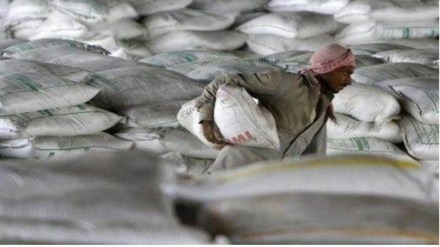Costlier fuel and power supply along with a decline demand hit the cement sector in the September quarter, with manufacturers posting lower net profit and some even slipping into losses. With demand picking up, however, as construction activity resumes after the monsoon, the next two quarters are expected to be good for the sector.
“The second quarter is a traditionally weak quarter due to the rains, and this time construction activities were also impacted due to the extended monsoon. Further, the rise in power and fuel costs, which contributes to about 25% of the total costs, also played its part. So, both the levers impacted the sector,” Nilesh Narwekar, CEO of JSW Cement told FE.
The fall in demand is generally about 15-20% in Q2, but this time it was “much higher”, another sectoral expert said.
While companies such as Ambuja Cements, UltraTech Cement and Shree Cement posted lower net profits, ACC posted a net loss during the second quarter
Also read: GM mustard key to cutting edible oil imports
“Operating and net profit for cement producers fell sharply year-on-year in the second quarter, owing primarily to higher power and fuel costs and only a marginal increase in prices and realisations. Imported coal (FOB Australia) and domestic petcoke prices have risen by over 125% and 35% on-year, respectively, in Q2, leading to power and fuel costs surging through the roof,” Hetal Gandhi, director-research at Crisil Market Intelligence & Analytics, told FE.
“In fact, for the players who have reported the Q2 results, power and fuel costs have increased by over 60% on-year on a per tonne basis. On the other hand, retail cement prices rose by a meagre 2% on-year in the past quarter, driving profitability lower even as other cost components remained largely stable,” he said.
“The cement industry has been facing significant margin pressure resulting from steep rise in global energy prices. However, recent cooling off in energy prices and post monsoon demand pick-up appears like a silver lining for coming quarters,” Ambuja Cements CEO Ajay Kapur said.
According to JSW Cement’s Narwekar, the second half of the financial year is expected to be better for the industry as construction activity has started picking up from Q3. The industry, which traditionally hikes prices of the commodity, would also look at raising prices during the second half, probably in line with the previous financial year.
“Overall operational profitability is set to see a marginal improvement on a sequential basis in the next two quarters on the back of recent price hikes taken over September and October. However, this would not be enough to cover the increase in power and fuel costs, as thermal coal prices remain high, with International Coal (FOB Australia) crossing $430 per tonne in October 2022,” Crisil’s Gandhi said.
The prices of domestic pet coke prices rose by 15-20% in October after cooling in August and September.
Cement prices, which witnessed a marginal uptick in September and October, are likely to increase on the back of a demand increase after the festive season and as manufacturers pass on the rise in input costs.
